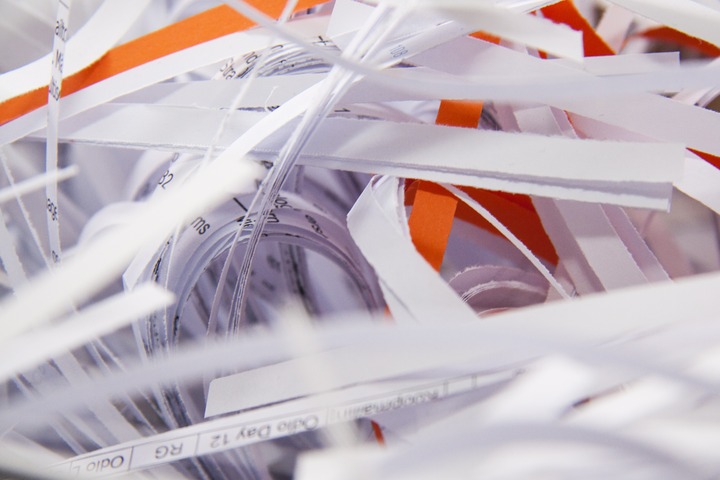Where sensitive information can be accessed and communicated with a few clicks, safeguarding confidential data has never been more critical. Companies, both large and small, possess a worth of sensitive information, from client records to proprietary company strategies.
Ensuring that this data remains secure and confidential is not merely a good practice; it’s a legal and ethical obligation.
Corporate paper shredding procedures and policies are a foundational element of any strong data security strategy.
They play a key role in stopping unauthorized access to sensitive information and safeguarding data privacy.
In this comprehensive guide, we will essay on a journey through the complexities of corporate paper shredding procedures and policies.
And exploring the key steps to ensure data security, the significance of document review schedules, security measures in place, compliance with legal requirements and industry standards, and the critical aspect of employee training and guidance.
What Are The Key Steps In Our Corporate Paper Shredding Procedure To Ensure Data Security?
Ensuring data security through corporate paper shredding involves a series of key steps:
- Document Collection and Sorting: Begin by collecting all documents that require shredding. Categorize them based on their sensitivity and confidentiality levels.
- Designated Shredding Bins: Place designated shredding bins or containers strategically throughout the workplace. Ensure that these bins are easily accessible to employees.
- Secure Storage: Store sensitive documents securely before shredding, especially if they cannot be immediately processed. Lockable cabinets or rooms are ideal for this purpose.
- Regular Review: Establish a routine for document review to determine which documents are ready for shredding. This review should be in line with your company’s document retention policies.
- Legal Compliance: Ensure that your document shredding process adheres to all relevant legal requirements, such as data protection and privacy regulations.
- Document Destruction Schedule: Develop a clear schedule for document destruction. This schedule should align with your company’s document retention policies and legal obligations.
- Shredder Selection: Invest in a high-quality shredder that meets the security needs of your business. Alternatively, utilize free paper shredding events in Cincinnati 2023 for secure disposal although you can do Cross-cut or micro-cut shredders are excellent choices for sensitive documents.
- Proper Shredding: Use the shredder according to its specifications and guidelines.
Feed documents into the shredder in a manner that ensures thorough destruction.
How Often Should Documents Be Reviewed And Shredded In Compliance With Our Corporate Policy?
The frequency of document review and shredding in accordance with your corporate policy depends on several factors. It’s essential to strike a balance between data security and operational efficiency.
Typically, businesses opt for annual or semi-annual reviews to ensure that documents remain current and relevant. However, the nature of your industry, legal requirements, and the sensitivity of the data should influence the frequency.
Highly sensitive information may require more frequent reviews, while less critical data can follow a less frequent schedule. Regular assessments are vital to maintain data security and legal compliance, making sure your document management practices align with evolving needs and regulations.
What Security Measures Are In Place To Safeguard Sensitive Information During The Shredding Process?
Here are security measures in place to safeguard sensitive information during the shredding process
- Document Handling Protocols: Establish clear protocols for document handling from collection to shredding to prevent unauthorized access.
- Secure Storage: Ensure sensitive documents awaiting shredding are stored securely in lockable cabinets or designated areas.
- Access Control: Limit access to shredding areas to authorized personnel only, reducing the risk of data exposure.
- Shredder Selection: Choose a high-security shredder like cross-cut or micro-cut models to effectively render documents irrecoverable.
- Supervision: Implement supervision during the shredding process to ensure documents are correctly fed into the shredder.
- Data Destruction Confirmation: Consider a verification step to confirm that the shredded material is properly destroyed and unrecoverable.
- Waste Management: Implement secure disposal methods for shredded materials to prevent any data reconstruction attempts.
Many businesses also offer free paper shredding services for seniors who may have documents containing personal information. Checking for free paper shredding for seniors near me can help older adults safely dispose of sensitive materials.
How Do Employees Receive Training And Guidance On Adhering To Our Corporate Shredding Procedures And Policies?
Employee training and guidance on adhering to corporate shredding procedures and policies is essential for maintaining data security. To ensure effective implementation, businesses should conduct regular training sessions.
These sessions can cover the importance of data security, the specific steps in the shredding process, and the legal implications of non-compliance. Interactive training modules, workshops, or online courses can be employed, allowing employees to grasp the nuances of the corporate policy.
Additionally, providing written guidelines or manuals as reference materials can aid in reinforcing the training. Ongoing support and clear channels for addressing questions or concerns are equally important.
By fostering a culture of data security awareness, employees can become active participants in safeguarding sensitive information, reducing the risk of data breaches, and ensuring compliance with corporate shredding policies.
Why Is Document Shredding Essential For Corporate Data Security?
Document shredding is crucial to prevent unauthorized access to sensitive information and maintain data privacy.
What Types Of Documents Should Be Included In Our Shredding Procedure?
All documents containing sensitive or confidential information, such as financial records, customer data, and internal communications, should be included.
How Often Should We Review Our Corporate Shredding Policies For Updates?
Regular reviews, at least annually, are recommended to ensure that policies are up-to-date with changing regulations and technology.
What Is The Role Of A Designated Data Protection Officer (DPO) In Corporate Shredding Procedures?
A DPO is responsible for overseeing data protection compliance, which includes ensuring that shredding procedures align with legal requirements.
How Can We Measure The Effectiveness Of Our Corporate Paper Shredding Procedures?
His effectiveness can be measured by monitoring data breaches, tracking compliance, and conducting regular audits of the shredding process.
corporate paper shredding procedures and policies are the cornerstone of data security and privacy in the modern business landscape. They play a key role in safeguarding sensitive information, conceding with legal requirements, and mitigating the chances of data breaches.
By following a well-defined procedure, adhering to industry standards, and ensuring that employees are adequately trained, businesses can establish a robust defense against unauthorized data access.





